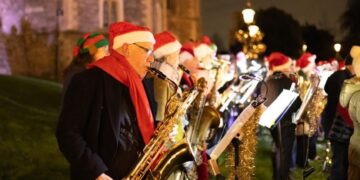Wargrave Local History Society’s February meeting was an illustrated presentation by Dr Margaret Simons, on Suffragettes – the result of her detailed research into the campaigns.
The Act of Parliament that gave women over 30 the right to vote in general elections was passed just 105 years ago, on February 6, 1918, but this was just a part of a wider movement to increase rights for women.
The fight to gain the franchise had taken about 50 years, and had both male and female supporters and detractors.
As long ago as 1866, when there was a proposal to extend the franchise for men, a Women’s Suffrage Committee organised a petition that was presented to Parliament by John Stuart Mill MP.
He supported their cause, and proposed an amendment to the 1867 Reform Bill to replace “male person” by “person”, which would entitle women to gain the vote if they were qualified in the same way as male electors, but the amendment was defeated.
Such Reform Bills came before Parliament almost every year until 1914, but amendments to include female voters were always defeated. The campaign was not to give the vote to all women, but to those who would qualify on the same basis as men did.
Another organisation, the National Society for Women’s Suffrage, was formed in 1867, and, by 1895, the campaigners became more organised, with the formation of the National Union of Women’s Suffrage Societies.
Under Millicent Fawcett’s leadership, these suffragists sought to use legal and peaceful means to achieve their aims. A different approach was taken by the Women’s Social and Political Union, begun by Mrs Pankhurst in Manchester in 1903.
These suffragettes were more militant, and believed deeds not words would be more effective, and local meetings of both groups were regularly reported in the local newspapers.
There was also a Women’s National Anti-Suffrage League, with several notable local ladies amongst them.
The Women’s Social and Political Union was run on fairly autocratic lines by the Pankhursts, and this led to a split, with the formation of the Women’s Freedom League – still a militant movement, but run more democratically.
A meeting at Tilehurst in December 1908 considered that militant action was necessary if they were to be taken seriously.The most notable locally was on June 1, 1914, when a Wargrave church was attacked by arsonists, and a number of suffragette messages were left by the perpetrators.
Soon after, on August 4, the First World War began. This saw the end of militant action, the effect of the war being to bring all classes of people together, and so in preparation for the election at the end of the war in 1918, women were eventually granted the vote by the passing of the Representation of the People Act that year.
The women turned out in numbers – queuing before the poll opened, and at Windsor in the first three hours, more women than men cast their vote.
It is debatable if women would have been given the right to do so had it not been for the war.
PETER DELANEY














































